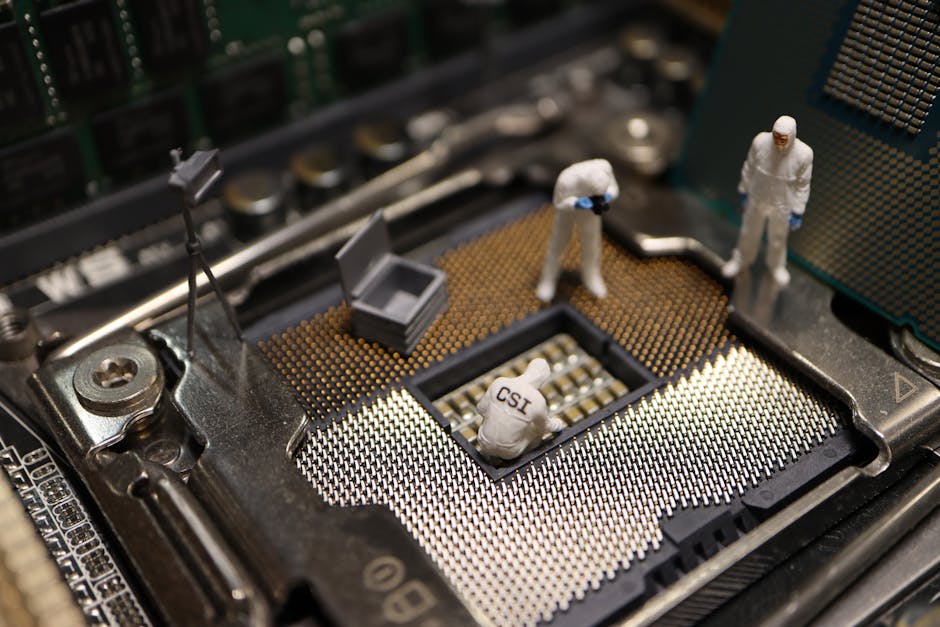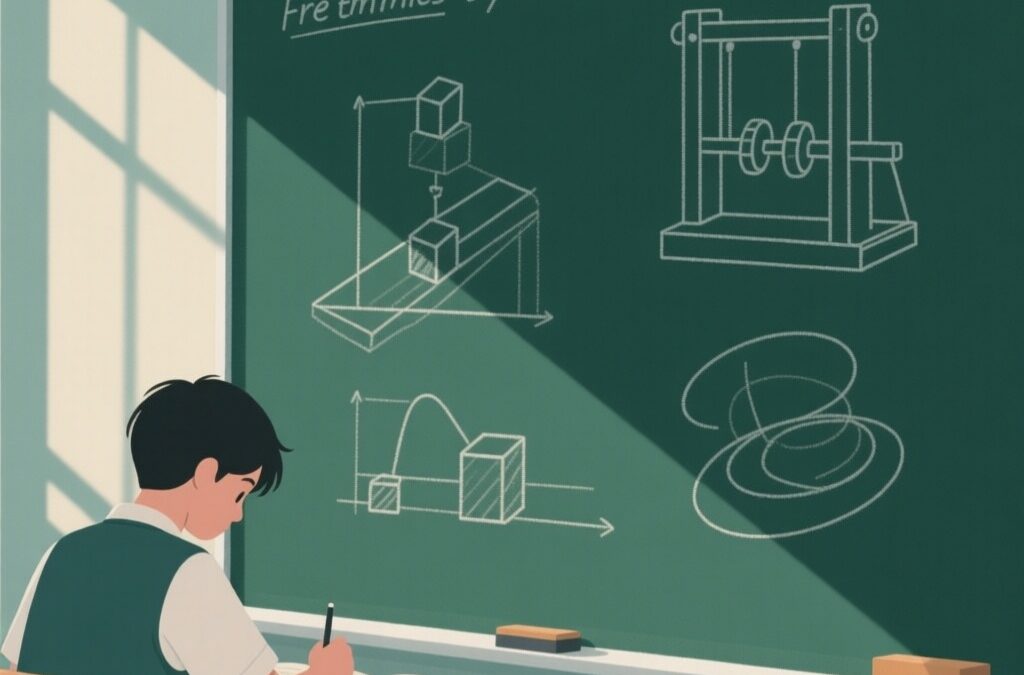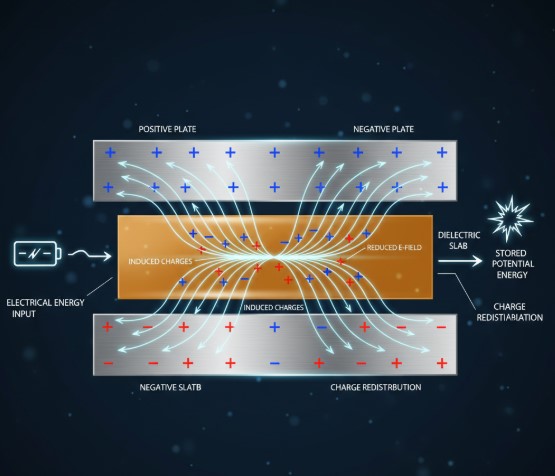The IIT JEE time constant is a critical concept in understanding the transient behavior of RC circuits. This parameter dictates how quickly a capacitor charges or discharges, influencing the circuit’s response to voltage changes. This article will guide you through solving numerical problems related to the IIT JEE time constant, providing a clear understanding of these fundamental principles.
Table of Contents
Read More
Understanding RC Circuits and the IIT JEE Time Constant
The behavior of RC circuits is governed by the time constant (τ), which controls how quickly capacitors charge or discharge. This is a core topic for IIT JEE aspirants since it forms the basis of many transient analysis problems.
Definition of Time Constant
The time constant is defined as:
###\tau = R \cdot C###
where:
##R## = resistance (in ohms, Ω)
##C## = capacitance (in farads, F)
Interpretation:
In charging, after time ##\tau##, the capacitor reaches ≈63.2% of the source voltage.
In discharging, after time ##\tau##, the capacitor voltage falls to ≈36.8% of its initial value.
Impact of Time Constant
Small τ → faster charging/discharging
Large τ → slower charging/discharging
Thus, τ directly dictates the rate of exponential growth/decay in capacitor voltage.
Numerical Problems and Solutions
Problem 1: Basic Time Constant Calculation
Problem: A series RC circuit has a resistance of 2 kΩ and a capacitance of 50 μF. Calculate the time constant.
Solution:
Identify values: R = 2 kΩ = 2000 Ω, C = 50 μF = 50 × 10⁻⁶ F = 0.00005 F. Apply formula:
###\tau = RC = 2000 \times 0.00005 = 0.1 \,\text{s}###
Answer: The time constant is 0.1 seconds.
Problem 2: Charging Analysis
Problem: An RC circuit with R = 5 kΩ and C = 20 μF is connected to a 10V DC source. Find the capacitor voltage after one time constant during charging.
Solution:
Time constant:
###\tau = RC = 5000 \times 0.00002 = 0.1 \,\text{s}###
At t = τ, capacitor voltage ≈ 63.2% of source voltage:
###V_C = 0.632 \times 10 = 6.32 \,\text{V}###
Answer: The capacitor voltage after one time constant is approximately 6.32 V.
These step-by-step problems illustrate how to calculate time constants and voltage values in RC circuits. Mastery of such calculations is vital for efficiently solving IIT JEE circuit problems.
Key Takeaways
Mastering RC circuits requires a solid understanding of the IIT JEE time constant and its implications. The time constant governs transient behavior, making it essential for analyzing charging and discharging in capacitors. Practice is the most effective way to strengthen your skills—solve many problems to become comfortable with these concepts.
Enhancing Your Skills
- Learn to calculate and interpret the time constant accurately.
- Understand capacitor charging/discharging in relation to the time constant.
- Practice problems with different initial conditions and circuit configurations.
- Maintain unit consistency—resistance (Ω), capacitance (F), time (s).
- Familiarize yourself with standard formulas for charging and discharging voltages.
- Use simulation software to visualize transient behavior for deeper insight.
These steps will enhance your problem-solving skills and help you excel in IIT JEE circuit analysis.
Similar Problems (Quick Solutions)
Problem 1: Find the time constant for R = 2.2 kΩ and C = 47 μF.
Solution: ###\tau = RC = 2200 \times 47 \times 10^{-6} = 0.1034 \, s###
Problem 2: An RC circuit has R = 10 kΩ and a time constant of 0.5 s. Find C.
Solution: ###C = \dfrac{\tau}{R} = \dfrac{0.5}{10000} = 50 \,\mu F###
Problem 3: Calculate the voltage across the capacitor after two time constants if the source voltage is 12 V.
Solution: During charging: ###V = V_{source} \cdot (1 – e^{-t/\tau})### At ##t = 2\tau##: ###V = 12 \cdot (1 – e^{-2}) \approx 12 \cdot 0.865 = 10.39 \, V###
Problem 4: In a discharging RC circuit, if the initial voltage is 5 V, what is the voltage after one time constant?
Solution: During discharging: ###V = V_0 \cdot e^{-t/\tau}### At ##t = \tau##: ###V = 5 \cdot e^{-1} \approx 5 \cdot 0.368 = 1.84 \, V###
Problem 5: Determine the time it takes for the capacitor to charge to 90% of its final value in an RC circuit with τ = 0.2 s.
Solution: ###0.9 = 1 – e^{-t/\tau} \;\;\Rightarrow\;\; e^{-t/\tau} = 0.1### Take ln: ###-t/\tau = \ln(0.1) \approx -2.302### So: ###t = 2.302 \cdot \tau = 2.302 \cdot 0.2 \approx 0.46 \, s###
| Concept | Description | Formula/Calculation |
|---|---|---|
| Time Constant (τ) | The time required for the capacitor voltage to change by approximately 63.2% during charging or discharging. | τ = RC, where R is resistance and C is capacitance. |
| Charging of Capacitor | Voltage across the capacitor increases exponentially towards the source voltage. | V(t) = V0(1 – e-t/τ) |
| Discharging of Capacitor | Voltage across the capacitor decreases exponentially towards zero. | V(t) = V0e-t/τ |
We also Published
RESOURCES
- Time constant and its meaning
- What is the significance of time constant of R-L circuit ?
- Iit Jee Physics | PDF
- Find time constant of the following circuits. (a) (b) (c )
- Growth and Decay of Current in LR Circuits: Formula & Derivation
- An LR circuit having a time constant of 50 ms is connected with an ide
- Calculating the Time Constant for an Lr Circuit | Physics | Study.com
- In the circuit shown in fig.. Time constant and steady state current w
- How consistent and disciplined were you during your JEE …
- Time constant of a C-R circuit is 2/(ln(2)) second. Capacitor is disch







0 Comments